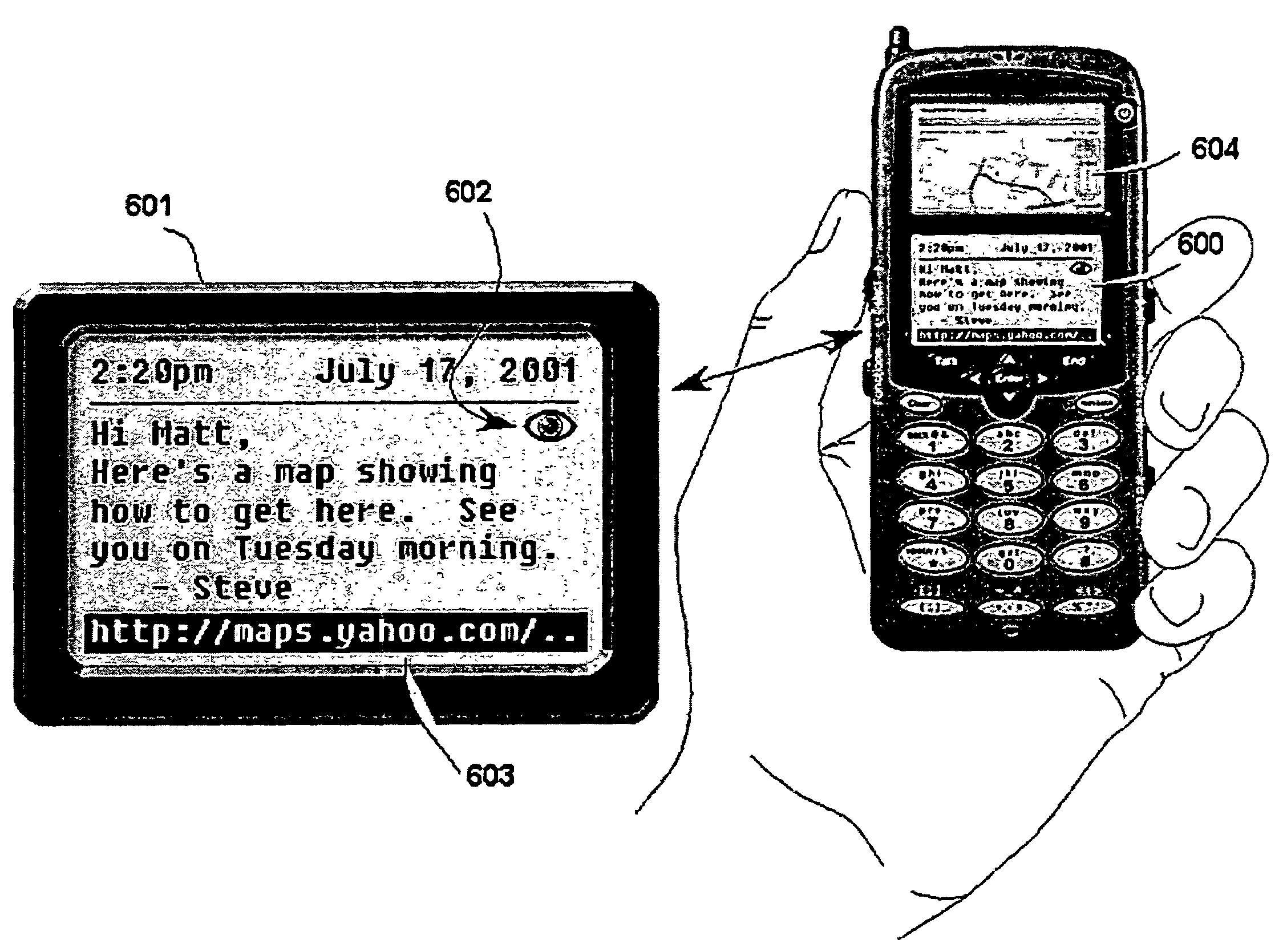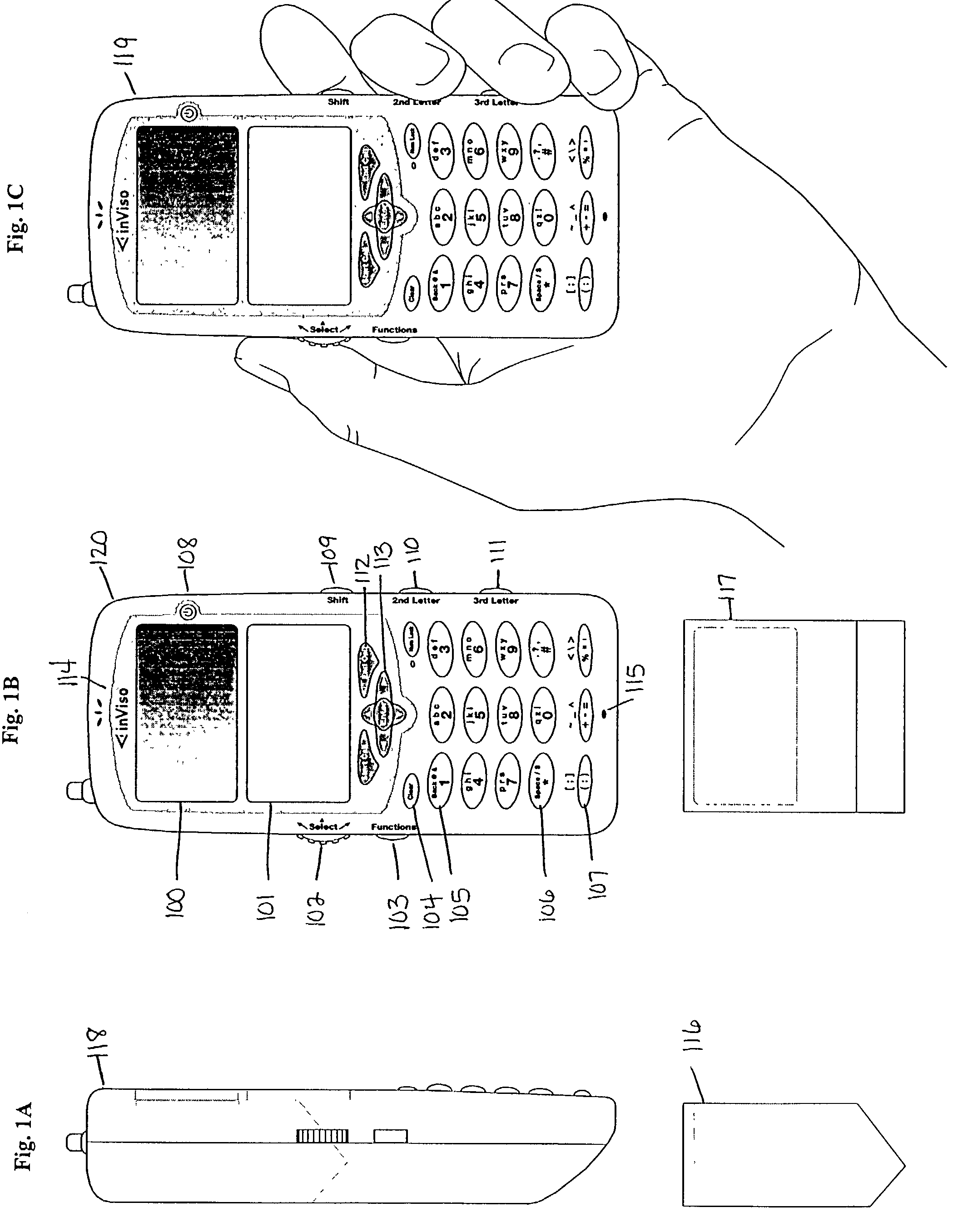Coordinating images displayed on devices with two or more displays
a technology of coordinating images and handheld devices, applied in the field of hand-held communication and computing devices, can solve the problems of growing uncomfortable with the device, difficulty in navigating and interfacing with full-size web pages and other documents and applications displayed, and excessive awkward typing of text on a hand-held device (already a relative awkward activity)
- Summary
- Abstract
- Description
- Claims
- Application Information
AI Technical Summary
Problems solved by technology
Method used
Image
Examples
Embodiment Construction
[0030]The following describes a handset on which my invention can be embodied. FIG. 1A shows a microdisplay-enhanced handset 118 in side-view. FIG. 1B shows the same in front-view. FIG. 1C shows the same in front-view, shown held in a person's hand. This handset includes a microdisplay 100 positioned above a direct-view display 101. Most of the elements of this handset could be applied to a wide range of devices—including cellular phones, “Smart-phones”, Web-phones, PDAs, hand-held computers, remote controls, and others. Throughout the rest of this patent, most references to “handsets” can refer to any of these types of devices.
[0031]The direct-view display can be any kind of direct-view display, but preferably it would be a thin bit-map LCD display with less resolution than the microdisplay but enough to render an identifiable portion of a larger image. For example, a 160×120-pixel direct-view display with 3-bits of gray scale (white, black, and six intensities of gray in-between w...
PUM
 Login to View More
Login to View More Abstract
Description
Claims
Application Information
 Login to View More
Login to View More - R&D
- Intellectual Property
- Life Sciences
- Materials
- Tech Scout
- Unparalleled Data Quality
- Higher Quality Content
- 60% Fewer Hallucinations
Browse by: Latest US Patents, China's latest patents, Technical Efficacy Thesaurus, Application Domain, Technology Topic, Popular Technical Reports.
© 2025 PatSnap. All rights reserved.Legal|Privacy policy|Modern Slavery Act Transparency Statement|Sitemap|About US| Contact US: help@patsnap.com



